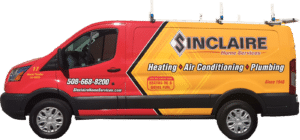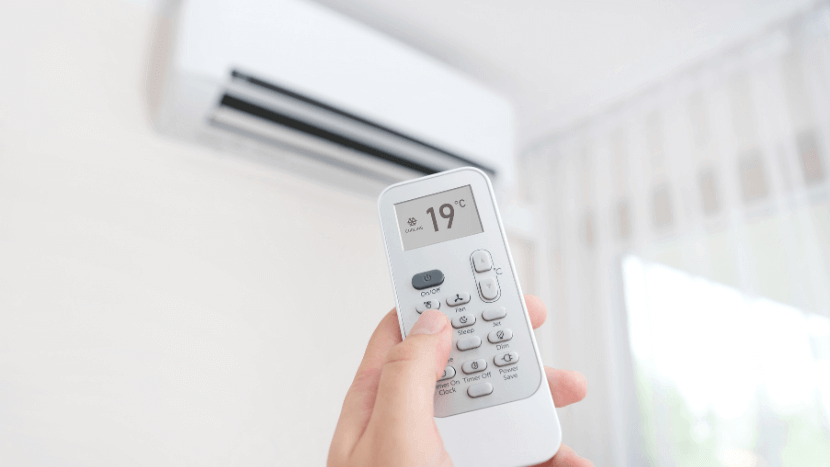Why You Should Reset Your AC After a Power Outage
BLOG CATEGORIES
140 South St., Walpole, MA 02081
P (508) 668-8200 Toll Free (877) 668-8822
info@sinclaireboston.com
Master Plumber License #9530,
Sheet Metal Master-Unrestricted #5442
Sinclaire Enterprises, Inc.
140 South St., Walpole, MA 02081
P 508.668.8200 Toll Free 877.668.8822 info@sinclaireboston.com
Master Plumber License #9530,
Sheet Metal Master-Unrestricted #5442
need service?
let us contact you
Air conditioning units are designed to keep our homes cool and comfortable during the hot summer months, but a power outage can cause your AC to malfunction, leaving you and your family hot and bothered in Boston, MA. When a power outage occurs, there’s a potential that it will cause your AC unit to malfunction by not turning on or acting strangely. In this guide, we’ll cover why you should reset your AC after a power outage, how to reset your AC after a power outage, and why your AC might not work after a power outage in Boston, MA.
When a power outage occurs, there’s a chance that it causes an electrical surge to run through your home’s electrical system. This power surge can cause damage to your AC unit, as well as anything else you have plugged in, which may result in it not turning on or functioning correctly. You don’t always know when a power surge occurs, and it doesn’t always have to accompany a power outage.
Additionally, a power outage can cause the AC’s circuit breaker to trip, which prevents the AC unit from turning on. Resetting your AC after a power outage is essential to ensure that your unit functions correctly and to prevent any further damage that may occur if you decide to use the AC normally after a power surge without resetting the unit.
How To Reset AC After A Power Outage
If you’re wondering how to reset your AC after a power outage, follow the steps below.
Steps 1 and 2: Turn off the AC at the thermostat and circuit breaker
The first step in resetting your AC after a power outage is to turn off the power supply to your AC. To do this, go to your thermostat, turn it off at the system switch, or raise the desired temperature level until it’s warmer than the room temperature and wait until your AC unit turns off. Once your AC unit turns off, go to your home’s electrical panel, locate your AC’s circuit breaker, and turn it off. You don’t have to turn off all the breakers, just the one that powers your AC unit.
Steps 3 and 4: Wait 30 minutes and then turn on the power supply
After you turn off the power supply to the AC unit, it’s recommended to wait for at least 30 minutes, as the waiting period gives the compressor in the AC time to reset and allows any electrical charges to dissipate. Allowing the residual electrical charges to dissipate helps to protect your AC unit against a voltage surge that sometimes occurs when electricity returns to the AC unit. After waiting for 30 minutes, turn on the power supply to the AC by flipping the circuit breaker back to the ‘on’ position.
Step 5: Switch on the AC at the thermostat and wait for the AC to turn on
After you flip the circuit breaker to the ‘on’ position, the next step is to turn on your AC unit at the thermostat. You can do this by turning it on at the system switch or lowering the desired temperature level to be lower than the actual room temperature once again. After turning on the AC unit, you should wait a few minutes to see if the unit comes on. If the unit does turn on, you should feel cooling air coming from the vents. If your AC unit fails to come on, you should check for the following issues listed below
Reasons Why an AC Won’t Turn on After a Reset
Reason 1: Faulty Thermostat
With most HVAC issues, people focus their attention on the HVAC units and fail to consider that the thermostat is at fault. After all, the thermostat is the component that tells the HVAC unit when to turn on and off. A faulty thermostat can cause an AC unit not to turn on or causes it to short cycle. Short cycling occurs when the AC frequently turns on and off instead of completing a cooling cycle. Short cycling also causes the unit to wear out faster, use more energy, and fail to maintain the desired temperature in your home. Dirty air filters can cause short cycling, but it’s important to contact Sinclair Home Services to rule out a faulty thermostat.
Reason 2: Tripped Circuit Breakers
Even though you turned on the circuit breakers before returning to your AC unit to turn it back on, that doesn’t mean that the AC unit’s circuit breaker hasn’t tripped again, which prevents the unit from coming on. To fix this issue, go back to the circuit breaker, find the one that powers your AC unit, and double-check to ensure that it’s in the ‘on’ position. If it isn’t in the ‘on’ position, just reset it and watch it for the length of time it takes you to walk back to the thermostat. If it stays on, go back to your AC and check to see if it came on. If not, you may have to call an electrician to check your circuit breaker.
Reason 3: Dirty Air Filter
Dirty air filters can cause an AC unit not to turn on or function correctly because they restrict airflow, causing the unit to become hotter faster and shut down. Dirty AC air filters also negatively affect indoor air quality by allowing dust, pollen, and other pollutants to circulate throughout your home. In turn, this can aggravate allergies, trigger asthma symptoms, cause respiratory issues, and worsen any existing health conditions you or your family have. During the summer months, it’s recommended to change or clean your air filters every four to six weeks.
Reason 4: Low Refrigerant Levels
Low refrigerant levels are another reason your AC might not turn on, even if your unit was running before the power outage. Low refrigerant levels in the AC unit cause it to overheat and shut down. Some signs that you have low refrigerant levels in your AC unit include reduced airflow, warm air blowing through the vents, hissing or bubbling noises, ice buildup on the evaporator coil, and a mysterious rise in your energy bills that have nothing to do with increased use or higher rates. If you suspect you have low refrigerant levels, contact us today, as only a certified professional can handle HVAC refrigerant per EPA regulations.
Reason 5: Electrical Issues
If your AC unit has any electrical issues, it may not turn on after following the steps above, even if it seemed like it was functioning fine before the power outage. Electrical issues can include faulty wiring or a damaged wiring connection caused by age, natural wear, and tear, lack of AC maintenance, or even rodents.
If you’ve followed the steps above on how to reset your AC after a power outage and you’re still having an issue with your AC unit, it’s time to call a professional. In the Boston area, Sinclair Home Services is here to set things right. Sinclair Home Services, a trusted family-owned business, has taken care of residential and commercial customers in the Boston area since 1948. For your air conditioning repairs, maintenance, and installation needs, you can contact us by filling out our online form or calling us at (508) 668-8200.
OUR SERVICE AREAS
- Ashland, Ma
- Attleboro, Ma
- Bellingham, Ma
- BLACKSTONE, MA
- BRIDGEWATER, MA
- Canton, Ma
- Dedham, Ma
- Dover, Ma
- EAST BRIDGEWATER, MA
- Easton, Ma
- Foxborough, Ma
- Framingham, Ma
- Franklin, Ma
- Holliston, Ma
- HOPEDALE, MA
- Hopkinton, Ma
- Mansfield, Ma
- Medfield, Ma
- Medway, Ma
- MENDON, MA
- MILFORD, MA
- MILLIS, MA
- MILLVILLE, MA
- MILTON, MA
- NATICK, MA
- NEEDHAM, MA
- NEWTON, MA
- NORFOLK, MA
- NORTH ATTLEBORO, MA
- NORTON, MA
- NORWOOD, MA
- PLAINVILLE, MA
- RANDOLPH, MA
- RAYNHAM, MA
- SHARON, MA
- SHERBORN, MA
- STOUGHTON, MA
- SUDBURY, MA
- TAUNTON, MA
- WALPOLE, MA
- WAYLAND, MA
- WELLESLEY, MA
- WEST BRIDGEWATER, MA
- WEST ROXBURY, MA
- WESTON, MA
- WESTWOOD, MA
- WRENTHAM, MA
AFFILIATIONS






